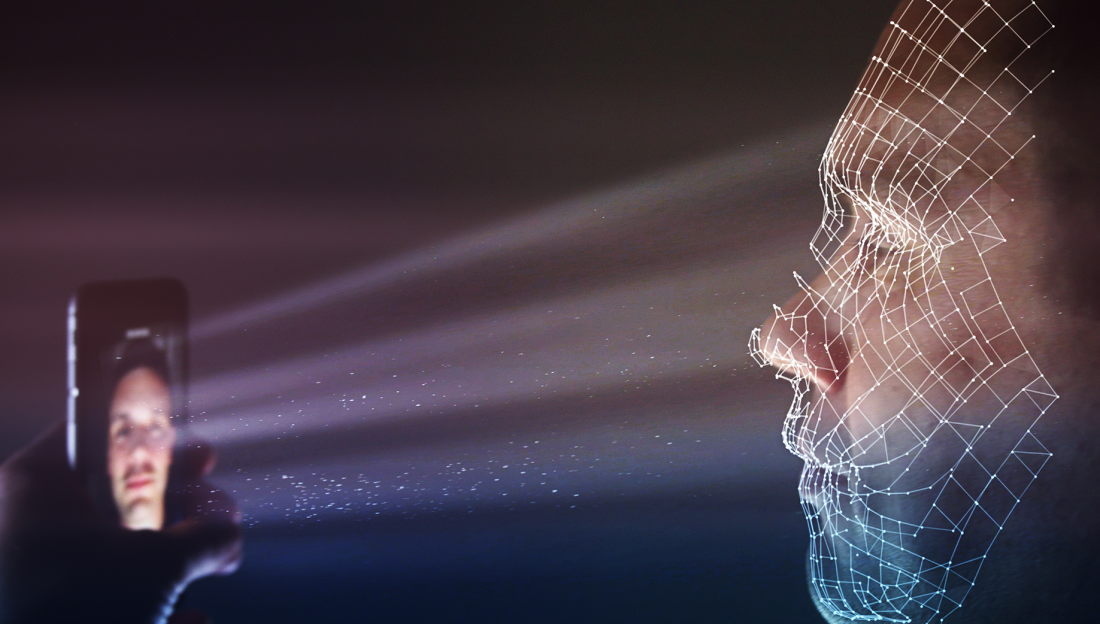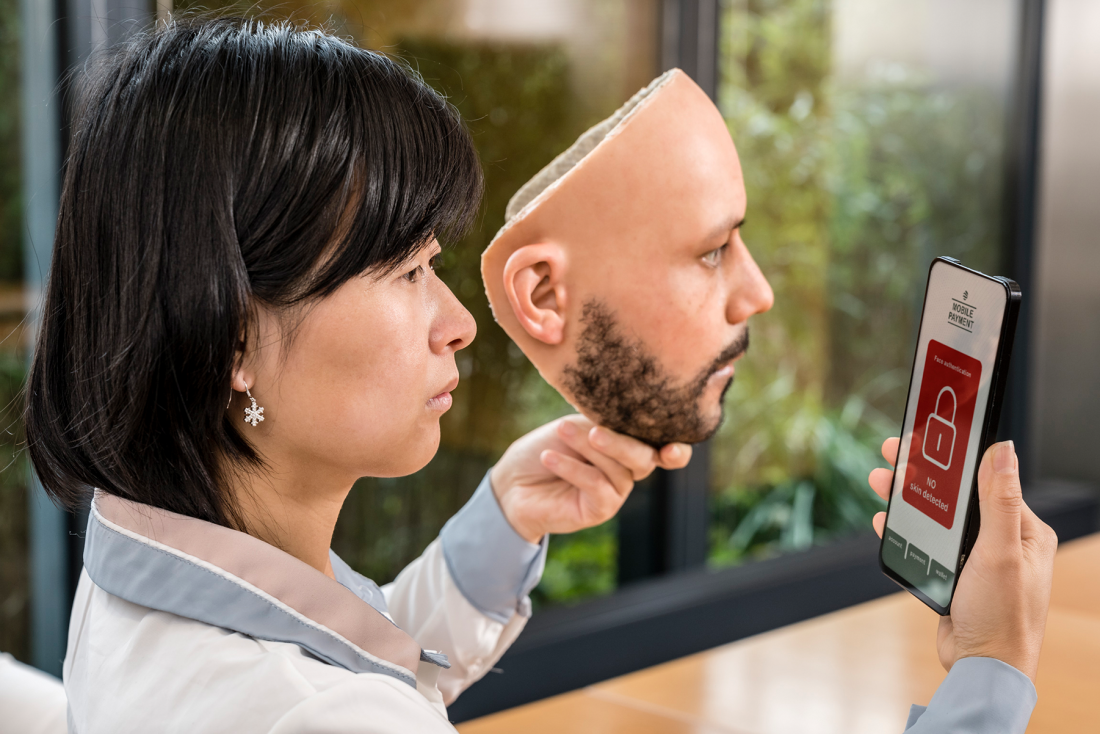Driving the next wave of biometric security with new behind-display face authentication technology – Interview with trinamiX
On October 15, 2022, Stefan Metz, Head of trinamiX Asia and Business Management Asia/Pacific, gave an interview to Yole Intelligence, talking about latest trends and the future of 3D sensing.


CMOS Image Sensor technology has been developed to serve more sensing applications in the near-infrared region, bringing a transition from imaging to sensing for new 3D functionalities. According to Yole Intelligence’s latest report, 3D Imaging and Sensing 2022, revenue is expected to increase from $7.6 billion to $16.7 billion, at an impressive 14.1% Compound Annual Growth Rate (CAGR), thriving in multiple applications. Yole Intelligence is a Yole Group‘s company.
The most important market for 3D sensing remains mobile, with Apple as a leader with its front face identification and rear 3D camera module solutions. Beyond 3D sensing mobile applications, 3D cameras are also rapidly entering the consumer market in applications such as smart door locks and robotic cleaners. In the automotive market, the demand for new energy vehicles has accelerated the deployment of ADAS and DMS applications, increasing the demand for LiDAR and 3D camera solutions. In the industrial market, the COVID-19 pandemic accelerated the need to increase automation in manufacturing and logistics, inducing a stronger request for 3D sensing cameras, including LiDAR systems. In addition, the medical industry is now also promoting the use of 3D sensing in endoscopes. Finally, 3D imaging is also establishing durability in niche industrial, defense, and space applications, such as atmospheric studies, geographic information systems, wind speed monitoring, archeology, meteorology, aerial imaging, and military use.
While companies like STMicroelectronics and Sony for near-infrared image sensors, Lumentum and Coherent (Formerly II-VI) for VCSELs, LG Innotek for 3D compact camera module integration, Trimble, Hexagon AB, and Sick for industrial 3D cameras, are numerous examples of leading companies in the field of 3D sensing, other players are emerging to bring further innovation into the field. Among them, trinamiX is a leading innovator in the field of 3D sensing, proposing a combined hardware and software solution for a more secure smartphone and consumer face authentication technology compatible with a behind-OLED device.
Florian Domengie, Senior Analyst in the Imaging team within the Photonics and Sensing division at Yole Intelligence, had a chance to speak with Stefan Metz, Head of trinamiX Asia & Business Management Asia/Pacific, about the market trends and opportunities in the field of 3D sensing, and the recent activities and products of the company.
Florian Domengie (FD): First, please introduce yourself and your activities to our readers.
Stefan Metz (SM): My name is Stefan Metz, and I am one of the co-founders of trinamiX and have held several different roles in the company in the past eight years. Currently I am in charge of trinamiX Asia and the global biometrics business. I relocated to Shenzhen in 2021 to further our business growth in Asia and also our relationship with Asian customers. Here I am strengthening our local activities and recruiting a team of industry experts for sales and tech support.
A year after Android phones abandoned 3D sensing, 3D sensing returns in the Honor Magic 4 Pro phone in early 2022, but this time using iToF technology, while Apple has been leading the way in 3D camera adoption, whether front and rear, with structured light and ToF technologies.
FD: Amid the differing strategies of Apple and Android OEMs adopting 3D-sensing cameras, what are your thoughts on the trends in this market?
The integration of both front and rear 3D cameras depends on useful applications. One of the key applications of user-facing 3D sensing is secure facial authentication for the protection of the user’s privacy and assets. We also see a trend toward face authentication since people experience face authentication as more convenient than traditional authentication methods like PIN or passwords and even fingerprint scanning. While Apple made the strategic decision to switch from established fingerprint authentication to this more advanced way of authentication, I did not see a similar champion in the Android universe who took that leap. The last years have proven that secure facial authentication is here to stay, though, and now we see the second wave of solutions slowly entering the Android market as well. To accelerate this trend, it will be necessary to clearly show that the new solutions for facial authentication are significantly more secure than some of the early versions, particularly the still widely used 2D authentication. The latter could easily give the impression to the user that facial authentication per se is insecure, as most 2D authentications even have a popup message warning the user not to use this feature for sensitive applications.

FD: So, what are the challenges for Android phone OEMs to embrace 3D cameras for face authentication again, and how does trinamiX answer them?
Due to its high cost and a less homogeneous Android ecosystem, 3D sensing never had it easy in the Android world. I believe this is one of the key reasons why fingerprint authentication wasn’t already replaced in the high-end segment as it happened in the iOS space. However, as technology continues to develop, the initial hurdles are now disappearing one by one. For example, the cost of Time of Flight systems, as well as trinamiX’ proprietary technology, is much lower than the initial Structured Light systems that were used a few years ago. Any new technology will only find a place in consumer products if it helps to solve a real problem. That is why a secure and convenient facial authentication is key. trinamiX is developing not only a technology but goes all the way to the end and builds a full facial authentication solution, meeting all requirements of the end consumers.
If Yole Intelligence’s understanding is correct, trinamiX is aiming for an under-display IR camera and dot projector enhanced by trinamiX’s unique core algorithm.
FD: Could you please share with us the advantage of your technology compared to the structured light already used in smartphones? And what about ToF technology, now also able to be used for the facial recognition function and put at the front of smartphones as reported above in the case of the Honor Magic 4 Pro?
Optimizing the display-to-body ratio is one of the trends that have been driving technology development for many years. While fingerprint sensors that can be placed behind the OLED screen are already commercially available, structured light and ToF did not allow for this feature. Major hurdles are the high absorption of the light even through semi-transparent OLEDsand high distortion caused by the OLED that acts like an unwanted diffractive element. The trinamiX approach for secure facial authentication relies on a different method than SL and ToF, as the key element for strong anti-spoofing is our proprietary skin detection. This enables us to design hardware in a unique way that reduces the challenges to overcome, and our customized algorithms can then reconstruct the original information to give a robust result even behind OLED screens. The high quality of our behind-OLED face authentication solution has been confirmed by the official certification of FIDO, IIFAA, and Android security standards.
Yole Intelligence’s analysts know that trinamiX offers a full-face authentication solution to smartphone OEMs for hardware/software integration in their new models.
FD: Could you please share the progress or more updated information on this?
We work very closely with several smartphone OEMs to integrate our solution into their new phones. This renewed global demand for a secure facial authentication solution, in particular behind OLED screens, is also one of the main reasons we set up a regional hub in Shenzhen. At the same time, we expanded our ecosystem by developing strategic partnerships with key players in this industry. This is one of the steps we took to ensure that our solution will become a widely adopted standard in the smartphone space. Later this year, there will be more announcements to come.
FD: In addition to mobile, we are seeing 3D sensing rapidly adopted in a wide range of consumer electronics, such as tablets, smart door locks, and consumer robots. Will trinamiX also be involved in these segments? How do you see the market demand and technical requirements?
The use of our technology and, in particular, face authentication solutions go beyond the smartphone space. Connected devices have already entered our lives in many new areas. Lines between different products can also get blurry as they all interact to achieve the same goal. Think of a smart lock where the actual authentication step happens on your smartphone which in turn sends the open signal to the lock of your door. New ecosystems develop that will offer the user a seamless and smooth experience across different devices. This convenience is what makes users prefer face authentication over other authentication methods. And people get used to that high level of comfort. Smartphones are one central piece of the puzzle, but we by no means ignore the other markets. Our solution that protects the personal data and assets of smartphone users is equally well suited for safeguarding access to your home or car. And the level of security and convenience we’re all getting used to in the smartphone space will also be expected by the same consumers when they use their tablets or laptops. And while the integration into those products can differ on a technical level, the overall user experience is very similar. People like their daily experiences to be as convenient as possible, which means their interaction with electronics needs to be intuitive, frictionless, reliable, and fast.


FD: Some applications in automotive, such as DMS (driver monitor system) and driver identification systems, could be based on 2D cameras or 3D sensing. Do you think 3D sensing will have a large share in this area?
Advancing in-cabin sensing goes hand in hand with the trend toward higher degrees of autonomous driving. 2D sensing already enables several applications that have been introduced into the automotive space. 3D and other sensing augmentations will help open up further use cases and make existing ones more robust. Also, applications already known before will find entry into the automotive space. One example is an in-car payment that requires strong authentication. However, the new features will also help to make driving even more convenient and safe. trinamiX sensing technology, for example, has the potential also to monitor vital signs remotely, e.g., drowsiness or an imminent heart attack. One concrete example of this type of technology finding its way into cars is our collaboration with Grupo Antolin. Together with them, we have just developed a demonstrator showing how facial authentication can be used for frictionless access to your car.
Current 3D sensing technologies are more based on 850~940nm wavelengths, but Yole Intelligence is seeing that many research and studies are now focusing on SWIR (1310nm~1550nm).
FD: Do you think this will be a trend for 3D sensing because it has some advantages, such as being safer for eyes and able to detect long over long distances?
A wavelength of 1300 nm and higher is interesting for several applications, also for integration behind OLED. trinamiX follows this trend very closely. However, it remains to be seen when illumination units and sensors in this wavelength regime that meet the requirements of consumer applications will be broadly available. Our algorithms can work with a wide range of CMOS sensors, also in the longer wavelength regime, and for future products, I can image some applications being optimized for SWIR sensors.
FD: As a new player in the biometrics industry, how do you see the competitive landscape, as well as consumer needs, developing?
In recent years, design was a priority for consumer devices, hence the move to bring fingerprint sensors under the screen, even though in terms of performance, in particular security, this was not always an advantage. Security and usability have gained more attention lately, though, as there has been an increasing number of reviews and incidences showing there is room for improvement. Due to more sophisticated fraud attacks, both virtual and physical, more attention goes to the improvement of security; however, the design cannot be compromised. And this remains one of the key challenges, combining a great design with convenience of use while achieving high security. But this is clearly the way to go in order to ensure biometric authentication will not only remain widely accepted but also continue to ease our lives by eventually replacing all passwords that we still need to create, update, and constantly try to remember.
FD: Is there anything else you would like to add?
I still see many people being concerned about fraudsters gaining access to their personal biometric data. And this is a very understandable fear when your biometric features become your authentication in the virtual as well as the real world. I believe this is one of the main reasons why a significant number of consumers are still reluctant to trust or even use biometric authentication methods. However, our issue shouldn’t be that others can make copies of our biometric identity. Being afraid of people getting access to our biometric data, be it a photo of my face, a recording of my voice, or leaving a print of my finger behind for somebody to collect, would prevent us from interacting with the world. The only real solution to this problem is to ensure that the authentication process integrates a very strong liveness check that can filter out any and all malicious attacks on the device. This is what keeps me going every day, as I believe this will have a real, positive impact on the lives of many.
Interviewee


Stefan Metz is Head of trinamiX Asia & Business Management Asia/Pacific. Stefan got his Ph.D. from the Julius-Maximilians-Universität Würzburg, Germany. After pursuing postdoctoral studies at Princeton University and Carnegie Mellon University, USA, he joined BASF SE in 2010. Stefan dedicated the following five years to the development of OLEDs for next generation displays in BASF research. With the carve-out of trinamiX in 2015, Stefan seized the opportunity and joined the team of founding pioneers. Since the first steps of trinamiX, Stefan has held several positions, from supply chain management to business development and Director 3D Imaging. After his transfer to trinamiX’s office in Shenzhen, China, he took over his new role as Head of trinamiX Asia & Business Management Asia/Pacific in 2021
Interviewer


Florian Domengie, PhD. is a Senior Technology and Market Analyst, within the Photonics & Sensing division at Yole Intelligence, part of Yole Group. Florian is engaged in the technology and market analyses for various imaging technologies and contributes to the production of the relevant reports and projects.
Prior to Yole, Florian worked in STMicroelectronics in process and technology development fields, and in R&D projects management. Florian has authored and co-authored numerous papers and five patents in semiconductor R&D and manufacturing.
Florian holds a MSc in Engineering Physics, Materials and Microelectronics from INSA Toulouse (France), and a PhD. In Microelectronics and Nanoelectronics from the University of Grenoble-Alpes (France).